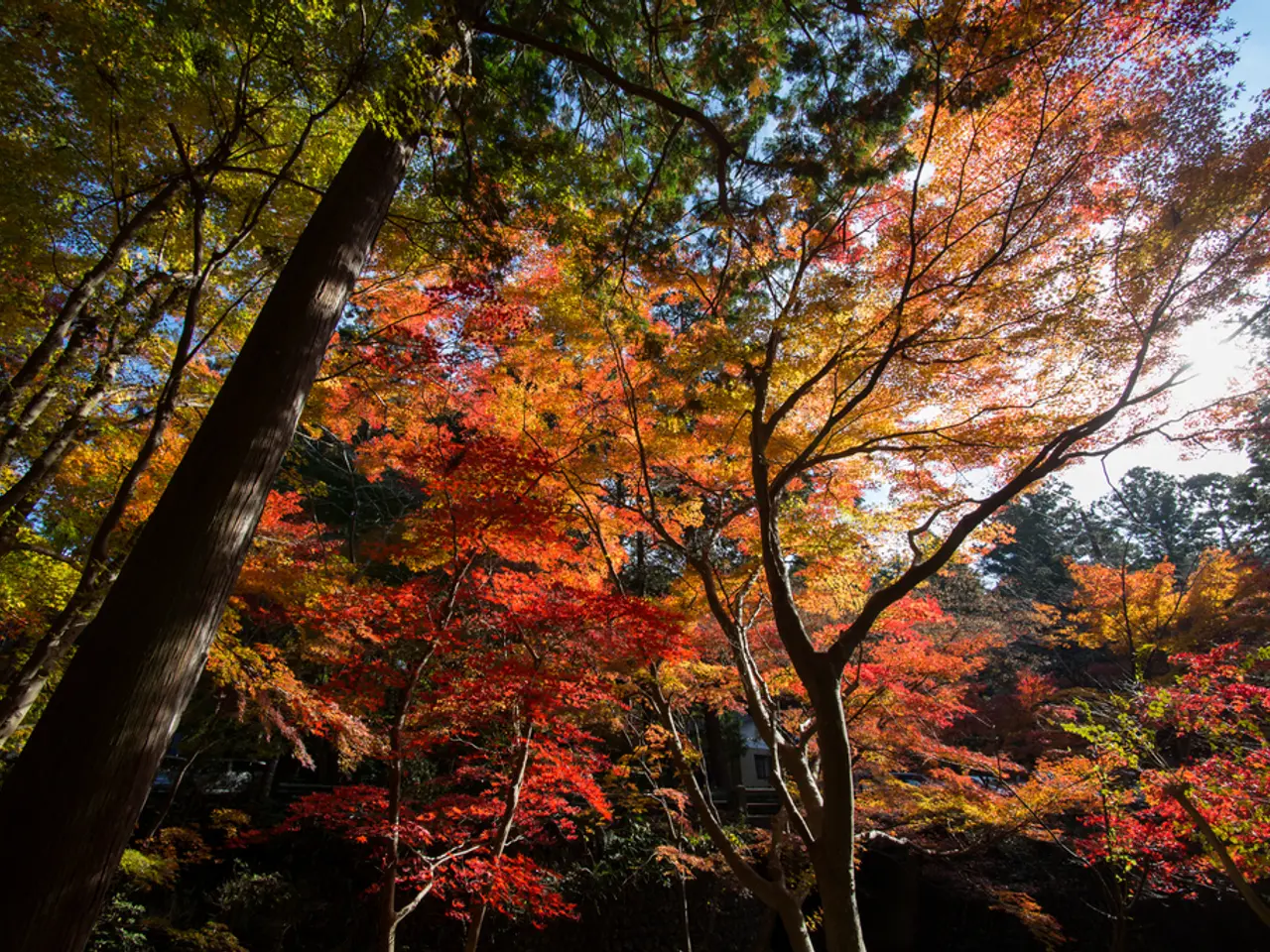Cultivating Redbud Trees: A Guide to Nurturing a Redbud Tree
The Eastern Redbud tree, scientifically known as Cercis canadensis, is a popular choice for garden enthusiasts due to its early-spring display of small pink or white flowers. This charming tree prefers light, rich, moist soil and can thrive in a variety of conditions, from full sun to partial shade.
This hardy tree is well-suited to USDA zones 4-9, making it a versatile addition to many gardens. It reaches a mature size of 20 to 30 feet tall with a 15 to 35 feet spread, and its branches often form a rounded canopy.
The Eastern Redbud offers significant wildlife value, with its early blooms providing nectar for bees, and its later green pods attracting birds, small mammals, and other creatures. However, it's essential to provide the right care to ensure the tree stays healthy and strong.
Healthy Eastern Redbud trees with good structure and airflow suffer less from fungal attacks like leaf spot, verticillium wilt, and dieback. To maintain soil moisture, especially in summer, consider regular deep watering and mulching around the tree to the drip-line with 3 inches of mulch.
When planting a Redbud tree, choose a spot with full sun or partial shade, preferably with acidic to neutral, humus-rich, well-drained soil that remains moist but not waterlogged. The site should be protected from strong winds and have moderately acidic soil with a pH between 5.0 and 6.0.
Redbud trees do not tolerate root disturbance, so choose a site carefully, as they do not like transplanting after establishment. Planting involves digging a hole at least three times as wide as the tree's roots, placing the tree in the hole with the root ball even with the ground, and backfilling the hole with native soil after thorough watering.
While regular irrigation, fertilizer, and pruning help keep Eastern Redbud trees vigorous, they have a short lifespan, with few living longer than 30 years, due in part to their poor resistance to disease and pests.
Botryosphaeria canker is a common disease affecting Redbud trees, with no fungicide available to control it. In such cases, proper diagnosis from an arborist is important before treating the tree for disease or insect infestation.
Pruning Redbud trees is crucial for avoiding irregular branching and maintaining their structure. Pruning during dry weather in fall is recommended. Branches with V-shaped joints should be removed to prevent breakage and tree damage.
Redbud trees can be grown for free by collecting and planting seeds from a neighborhood tree or rogue seedling, or by buying and planting containerized trees. Seedlings and saplings need regular water until established.
In conclusion, the Eastern Redbud tree is a beautiful and beneficial addition to any garden, offering an early-spring display of colour and providing value to local wildlife. With the right care and attention, this tree can thrive and bring joy for many years to come.
Read also:
- Wawa avian tests positive for West Nile disease
- Individuals suffering from ailments such as arthritis or asthma could potentially secure £30,000 in financial aid for home renovations at no cost to them.
- The market for Kraft Lignin is projected to increase at a rate of 7.2% each year until 2034.
- Revising hair care practices with cynorrhodon extracts for addressing hair fragility





